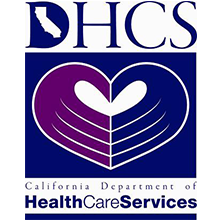HOW SELF-HARM AND ADDICTION ARE CONNECTED
Understanding Self-Harm
Self-harm is considered to be a form of addiction. People (especially adolescents) who purposely harm their bodies tend to crave this outlet as a way to release and cope with negative emotions.
Some people who engage in self-injurious behaviors couple self-harm with substance abuse. They may use substances to seek further relief from emotional turmoil.
Abusing drugs or alcohol can also lead to self-harm as an additional way of experiencing brief feelings of calm.
TYPES OF SELF-HARM
What is Self-Harm?
Self-harm is a term used to describe the actions someone takes to intentionally injure themselves repeatedly. The self-harming activity is usually done on impulse and is not meant to cause death.
Self-harm is also commonly referred to as self-mutilation, self-abuse, self-injury, and engaging in self-injurious behavior (SIB). The medically correct term for self-harm is non-suicidal self-injury (NSSI).
Types of Self Harm
There are various methods for engaging in NSSI. Just a few of the ways that people self-harm include:1
- Cutting the Skin
- Head-Banging
- Burning Oneself
- Pulling Out Hair
- Scratching the Skin Deep Enough to Draw Blood
- Skin-Picking
- Causing an Infection on Purpose
- Inserting Objects into Bodily Orifices
- Drinking Dangerous Liquids
There are various methods for engaging in NSSI. Just a few of the ways that people self-harm include:1
- Cutting the Skin
- Head-Banging
- Burning Oneself
- Pulling Out Hair
- Scratching the Skin Deep Enough to Draw Blood
- Skin-Picking
- Causing an Infection on Purpose
- Inserting Objects into Bodily Orifices
- Drinking Dangerous Liquids
Three common methods of self-harm are cutting, headbanging, and burning. It is estimated that between 70-90% of individuals who harm themselves do so by cutting their skin. 21-44% of people bang or hit their heads to self-harm, and 15-35% burn themselves.(2)
A DEFINITION
Three common methods of self-harm are cutting, headbanging, and burning. It is estimated that between 70-90% of individuals who harm themselves do so by cutting their skin. 21-44% of people bang or hit their heads to self-harm, and 15-35% burn themselves.(2)
Who Engages in Self-Harm?
- There are two million cases of self-harm reported in the United States every year. 60% of people who engage in self-harm are females.
- 90% of people who engage in self-harm behaviors begin to do so in their teen or preteen years.
- Approximately 50% of those who begin self-harm behaviors in their adolescence continue to do so as young adults.(4)
- It is estimated that 4% of adults and approximately 15% of adolescents in the United States take part in non-suicidal self-harming behaviors.(3)

Why Self-Harm Happens
Cutting, burning, pulling hair, and picking skin all to cause physical pain, however brief or long that pain might last. Since the majority of people don’t enjoy enduring pain of any kind, there are specific reasons why people choose to self-harm.
• A way to deal with stress, anxiety, and negative feelings
• A distraction from having to cope with difficult emotions
• The need to feel something physical
• To engage in some form of control over their lives
• To punish oneself for perceived wrongdoing
• To become emotional privately rather than publicly
Adults Who Self-Harm
Although adolescents are most at risk for NSSI, adults also engage in self-harm behaviors. The most common methods that adults use to self-injure are cutting, burning one’s skin, or banging the head against a wall.
Adults who self-injure may do so for a number of reasons:
• It can be an attempt to keep their loved ones interested in their lives and are often diagnosed as having borderline personality disorder.
• A traumatic experience (particularly from childhood) can result in self-harm behavior.
• Stress, painful events in life, and other emotional issues can lead an adult to engage in self-harm.
• Some adults may self-injure due to a psychotic break.
• Adults who are addicted to substances are also at risk for self-harming behaviors.
Signs of Self-Harm
Most people who inflict self-harm keep their activities a secret from others.
When a friend or loved one is suspected of engaging in self-harming behaviors, look for the following signs and symptoms:
• Unexplained scars
• Fresh and frequent cuts, burns, scratches, and other injuries
• Cuts on the body that are very straight lines or spelled out words
• Having sharp instruments readily available (for cutting) or lighters and cigarettes
• Wearing clothing that covers arms and legs, even in hot weather
• Low self-esteem issues
• Having trouble handling emotions
• Having relationship problems
• Inability to function properly at work, home, or school
Self-Harm and Substance
Abuse
Substance addiction is itself a form of self-harm that damages the mind, body, and spirit. When someone is suffering from drug or alcohol addiction, their mental state changes. This can mainly be due to a disruption in dopamine, serotonin, and endorphin levels in the brain.
Strong emotions and mood changes can occur in someone with a substance use disorder. These disruptive emotions often lead to frustration, anger, anxiety, depression, and feelings of self-hatred. Negative emotions such as these can lead to the need for an outlet to relieve stress and anxiety. Some people seek that release through self-injurious behaviors such as cutting, burning, or hair-pulling. Though NSSI is self-destructive, people who engage in these behaviors do so in order to feel better as they try to regulate their negative emotions.
There are approximately 19.7 million adult Americans who are addicted to substances.6 An estimated 16% of adolescents can also be categorized as abusers of drugs.(7) About 8.7% of people who engage in self-harm also abuse substances.(8)
Some people who begin to deliberately harm themselves as a way to numb their emotional pain may end up moving on to substance use. Alternately, some who begin using substances in an attempt to self-medicate may decide to self-harm instead of or in addition to using drugs or alcohol.
Effects of Self-Harm
There are various consequences that can result from deliberate self-injury. There is also a real risk of accidental death as a result of self-harm, dependent upon the methods used. These effects range from physical to emotional to social consequences.
Physically:
• Permanent scarring on the skin
• Uncontrolled bleeding
Infections
Emotionally:
• Intense guilt or shame
• Feelings of helplessness
• A diminished sense of self or self-worth
• Becoming addicted to this behavior
Socially:
• An avoidance of friends and family
• Feelings of being left out, because no one understands
•Having trouble with interpersonal relationships because lying about injuries becomes the norm
Mental Health Conditions
The fact that someone is deliberately engaging in self-harm without knowingly attempting to commit suicide indicates the presence of a mental health condition.
Self-harm on its own is not a mental illness. However, this particular type of behavior usually results from an inability to cope with disturbing issues, thoughts, or emotions. It indicates a lack of coping skills and is done in an effort to deal with these difficult feelings.
Self-harm can be a symptom of one of the following underlying psychiatric conditions:
- Borderline Personality Disorder (and other personality disorders)
- Substance Use Disorder
- Bipolar Disorder
- Depression
- Anxiety (especially Obsessive Compulsive Disorder)
- Schizophrenia
In an effort to spread awareness of NSSI and encourage people to become more open about their self-harm behaviors, March 1st has been designated as Self-Injury Awareness Day (SIAD) around the globe.
Breaking down the stereotypes associated with self-harm and educating the medical community about self-injury are some of the main goals of SIAD.TREATMENTS FOR SELF-HARM
Because self-injury behaviors are symptomatic of a psychological or psychiatric disorder, treatment is therapy-based. Medications and counseling that deal directly with any underlying psychiatric conditions are important, as are the following treatments that focus on reducing NSSI.
Psychotherapy is often the most useful tool in helping a person quit self-harm behaviors. There are group and individual therapy programs called Dialectical Behavior Therapy that help people who self-harm to overcome their destructive tendencies. Ways are taught to cope with distress in a healthier manner, such as practicing mindfulness techniques. People who self-harm due to past trauma (such as abuse or incest) can benefit from post-traumatic stress therapies.
Family therapy helps people communicate more effectively with family members in an open and direct manner. Group therapy is a beneficial way of discussing self-injury with others who share this issue. It can help lessen the shame and embarrassment associated with the behavior. It also helps to express emotions in a healthy manner with others.
Hypnosis, meditation, and other self-relaxation techniques aim to reduce stress that often precedes self-harm behaviors. Medication may be prescribed to reduce stress, such as anti-anxiety drugs, antidepressants, or low-dose antipsychotics.
A DANGEROUS INTERSECTION
When someone is simultaneously abusing substances and engaging in self-injurious behaviors, the potential for severe harm is present.
For instance, a person who is abusing alcohol will have physically and mentally slower reaction times. They are also less likely to feel intense physical pain due to diminished nerve endings. These bodily responses to alcohol make NSSI much more dangerous.
Someone who cuts while under the influence of alcohol is more apt to inadvertently make incisions that are too deep. This may cause excessive bleeding that may prove to be fatal.
Aside from the physical limitations that alcohol and substance abuse present, these drugs also tend to intensify negative feelings like hopelessness, depression, and anxiety. These heightened emotions can lead a person to delve into more extreme self-harming behaviors, possibly even leading to suicide.
Some dangerous substances that are especially linked to self-harm are:
Amphetamines
These highly addictive drugs include prescription medications and illegal substances such as crystal meth and cocaine. Someone with an amphetamine addiction can exhibit psychotic symptoms (amphetamine psychosis), although they may not necessarily have a psychiatric disorder.
Someone with an addiction to amphetamines may endure breaks from reality, behave violently, and experience various types of hallucinations. They can also engage in self-mutilation behaviors due to cognitive, visual, or auditory hallucinations that lead to self-biting, scratching, hair pulling or head banging.
Benzodiazepines
Physicians may prescribe these drugs for the treatment of mental conditions such as post-traumatic stress disorder (PTSD). They are used to produce calmness, lessen anxiety, and help with insomnia.
Among the drugs prescribed for PTSD are alprazolam (Xanax), lorazepam (Ativan), and diazepam (Valium). A person can become highly dependent on these substances within weeks of regular use. The potential for self-injury and suicidal thoughts are present for those taking these substances for PTSD. Benzodiazepines have the potential to increase acts of impulsive violence that may include self-multilation.(9)
Alcohol
This substance reduces a person’s inhibitions, negatively affects judgment, and increases the tendency towards impulsive actions. When a person becomes less inhibited and the central nervous system is depressed, the chances of experimenting with self-injury increase, as does the possibility of going beyond a person’s normal SIB tendencies.
Although self-harm is not necessarily an attempt at suicide, death can occur when drugs are involved. Someone who has a dual diagnosis of alcohol addiction and a mental health condition is doubly at risk for NSSI.
Resources
- https://www.ncbi.nlm.nih.gov/pubmed/25881206
- https://www.dualdiagnosis.org/self-harm-addiction/
- https://www.mentalhealthamerica.net/self-injury
- https://www.crisistextline.org/fast-facts/self-harm
- http://selfinjury.bctr.cornell.edu/documents/15_misconceptions.pdf
- https://www.samhsa.gov/data/report/2017-nsduh-annual-national-report
- https://www.cbsnews.com/news/survey-reveals-shocking-levels-of-teen-drinking-drug-abuse/
- https://web.archive.org/web/20130313124436/http://www.ncbi.nlm.nih.gov/pubmed/19936579
- https://www.ncbi.nlm.nih.gov/pmc/articles/PMC2993516/




